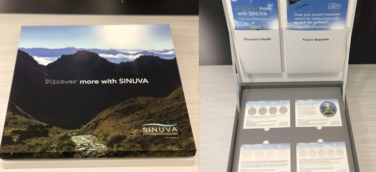An initial and discernible benefit to adopting decentralized clinical trial (DCT) models is alleviating patient burden by mitigating unnecessary travel through the utilization of eClinical platforms, mobile phlebotomy/nursing services, local clinics, and other technologies.
For example, oncology patients with end-stage cancers participating in traditional clinical trials would be required to travel, often substantial distances several times a week, to a research/academic site for something as simple as a routine blood draw, taking less than 15 minutes. Not only is this taxing on the patients and their families, but it also makes it more difficult for sponsors to retain patients over a long period of time. DCT models allow sponsors to implement decentralized study components to remove unnecessary travel, in this example, they can deploy mobile phlebotomists to travel to patients to complete the blood draw without ever requiring patients to leave their homes.
Despite the evident benefits of DCTs, this model is having a much larger impact on the clinical trials industry.
The Risk of Centralization
When a research study is centralized, it requires a lot more from patients to participate. Participants have to either live close enough to the site or have the time, resources, and aids necessary to travel to the site for in-person visits. This immediately excludes patients who can’t take off from work often or for extended periods of time, those who don’t have access to child care, patients without a vehicle or means of transportation for long distances, patients who feel uncomfortable in predominantly English-speaking settings, etc. All of this greatly limits the type of people who are able to participate, stifling diversity within a study.
The Push from Regulatory Bodies
With a long history of inequities and lack of diversity in clinical trials, the push for expanded inclusion and diversity within studies from regulatory bodies has been slow-moving and quite the undertaking. The FDA has released several guidelines and considerations for growing diversity in trials including recommendations on how to do so. Influential organizations, such as the National Institutes of Health, have made continuous strides in working to correct injustices around gender and racial exclusions in the clinical trials industry.
The National Cancer Institute (NCI) recognizes only 71 cancer centers nationally. These NCI-designated centers apply for the P-30 Cancer Center Support Grant and meet rigorous standards for this status. An important part of their application process is the “catchment area” of the center and their focus on preventing and treating cancer in as large of a geographic area as possible, highlighting their abilities to provide outreach to communities with socioeconomic- and health-related disparities.
Despite the growth of guidelines and recommendations from governing bodies, it is up to sponsors and stakeholders to build trials that are designed to expand patient access and make it easier for underrepresented and vulnerable populations to learn about a study, enroll, and participate.
Technology to Alleviate Burdens
Tools can directly address some of these challenges right off the bat such as using an eClinical platform that offers different languages, offering remote/telemedicine services to cut down on in-person visits, giving patients the opportunity to participate without having to leave their primary care provider, utilizing local urgent cares to recruit patients allowing them to hear about the trial from a care provider they may already trust, and so on.
Although a 100% virtual trial has limitations, such as access to steady internet or proper technology to participate, an approach that gives patients a choice in how they participate can help mitigate many participation barriers for vulnerable populations. When patients are able to choose how they participate, whether it’s deciding when and where they meet a mobile phlebotomist, picking between telemedicine or an in-person visit, what device they complete a virtual form on, etc., participation becomes easier for patients. By implementing any DCT component that gives participants optionality, a burden is lifted.
Expanding Patient Education
Another important aspect of successfully growing diversity in clinical research would be ensuring greater access to information and education around a trial. A primary barrier to underrepresentation among diverse populations is patients’ mistrust of healthcare systems. Even in compassionate conversations with diverse populations, there needs to be more education and representation made available to vulnerable populations and to populations who have historically been mistreated and excluded from trials.
Patients don’t want to participate in trials where they do not see other participants similar to them. Furthermore, patients’ likelihood to consider participating in a trial may be related to how they learned about the trial and from who. Investing in educational material that is clear, concise, and easy to understand across multiple languages and reading levels is a good place to start.
Another opportunity in the DCT space is using telemedicine, eClinical platforms, technology-driven services, etc., to allow patients the ability to hear about a trial and interact with clinical research centers (CRCs) and clinicians of similar backgrounds and races. Additionally, using technology to create recruitment advertisements and websites that cater to the needs of vulnerable populations and then allowing them to enroll and participate in a way that gives them options and information about how they can complete what is required of them, can remove some hesitation around participating in a study.
Including the Right Stakeholders
When it comes to designing a modern clinical trial, it is very important to ensure that all the right stakeholders are included in the conversation. Site staff and those with site-based backgrounds have experience interacting with patients and directly witnessing some of the challenges they face participating in these trials. Having a site-based perspective on which elements are presenting barriers for underrepresented patient populations to partake in a trial can be an invaluable addition to building a decentralized study model.
Conclusion
The ability to incorporate decentralized study components into clinical trials creates an opportunity to impact diversity and inclusion rates. DCTs offer many benefits, some of which directly relate to common barriers that underrepresented and vulnerable patient populations face when choosing whether to participate in a clinical trial. A lot of work is still to be done in this industry to expand access and create a space where all patients feel comfortable and safe participating. The world of clinical trials is evolving, and modernizing trials through the incorporation of technology and software where feasible presents an ideal opportunity to increase diversity and reach patients that would otherwise not partake in a trial.








